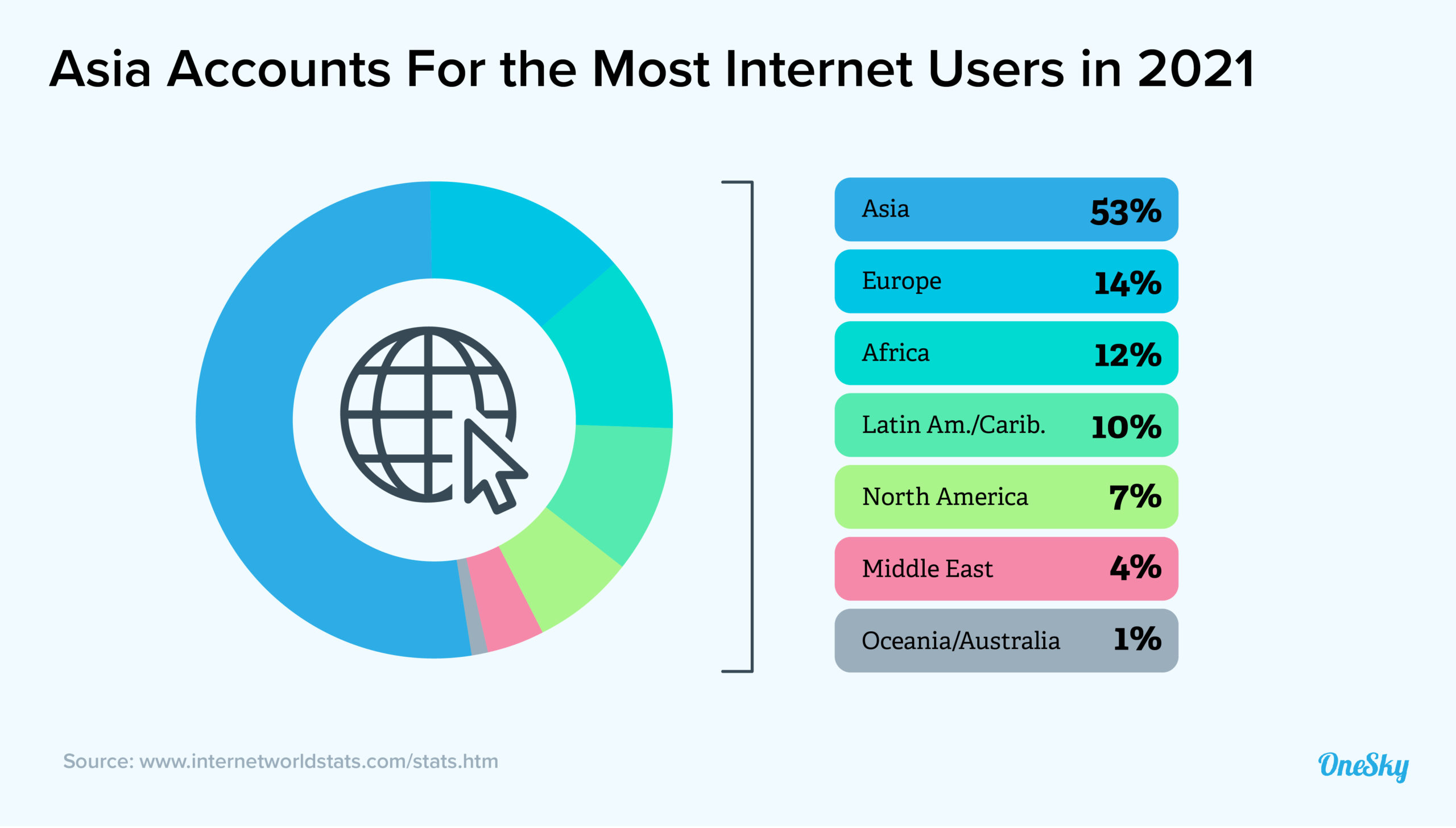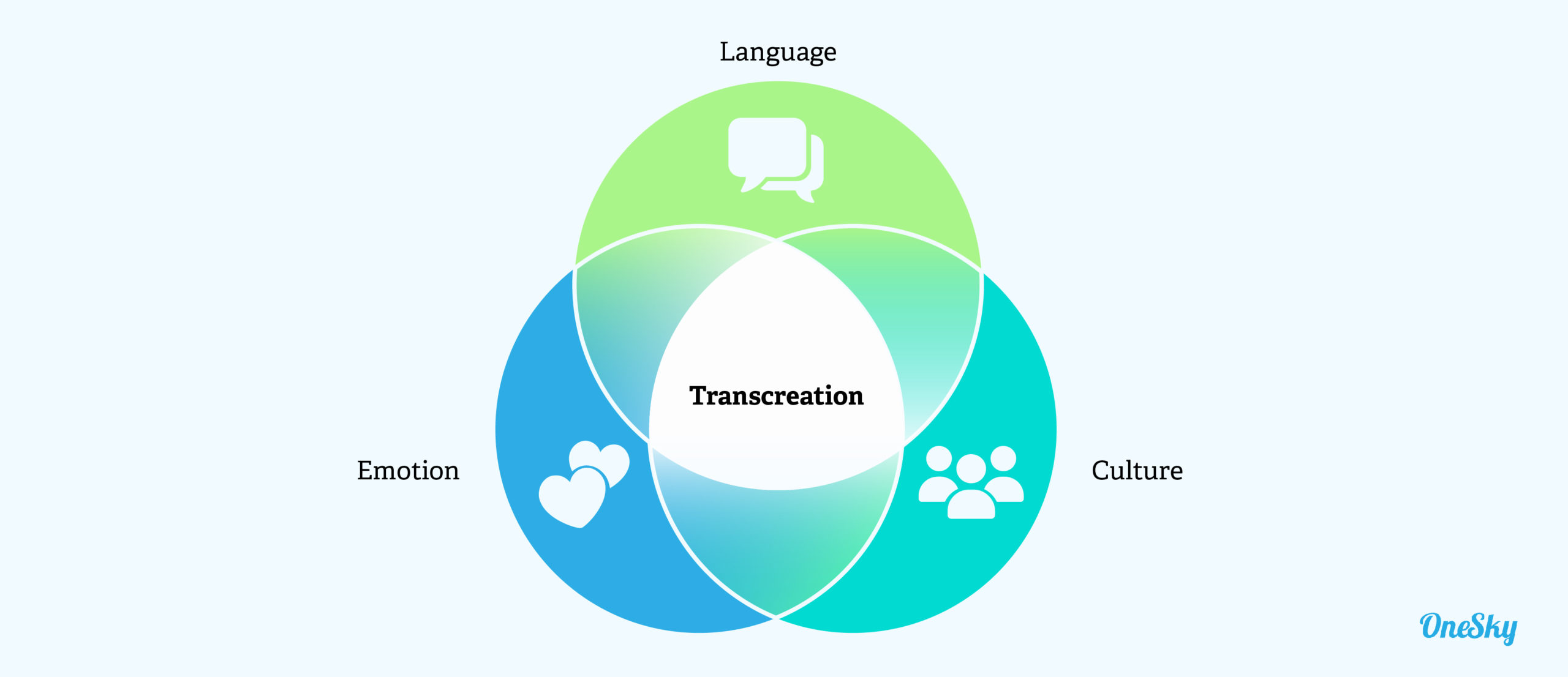Localization Trends and Predictions For 2021 and Beyond
The verdict is out: localization is good for business.
In fact, if you don’t localize your website or app, you could be missing out on 40% of your addressable market!

But localization isn’t a trivial undertaking. How can you make sure you’re spending your resources cost-effectively in the most relevant areas to stay on track and future-proof your strategy?
10 Localization Trends and Predictions You Need To Know
While we can’t hand you a magic 8 ball, we have helped thousands of businesses in over 65 countries localize their websites, apps, and games. The insights we have gained allow us to identify key localization trends and predict what’s in store.
1. Consumer Expect Localized Content
There are 5.1 billion internet users worldwide. 53.4% are in Asia, 14.3% are in Europe, and only 6.7% are based in North America. China and India, which have the highest app revenue and app downloads, will continue to lead the pack. Meanwhile, more consumers expect websites to (literally) speak their language.

To expand market share and open new revenue opportunities, brands must create content with a global appeal. Jamming customers with different cultural backgrounds and preferences through a one-size-fits-all experience won’t work in today’s diverse market. We can expect an increase in translation demand for websites, games, apps, and more.
2. Emerging Markets and Shifting Dynamics
The Regional Comprehensive Economic Partnership (RCEP) agreement signed in November 2020 has created the world’s largest free-trade zone among 15 countries in the Asia-Pacific region, with a total population of 2.2 billion.
China, Japan, and South Korea reap the most benefits from reduced customs duties, which threatens the competitiveness of foreign companies. To stay relevant, U.S. and European brands must increase their presence in these markets, e.g., by offering content and services in South-East Asian languages such as Vietnamese, Thai, and Indonesian.
Although European languages remain in high demand, many African and Eastern European markets continue to experience strong growth. Meanwhile, game developers should consider expanding into China, Japan, and South Korea where demand is highest.
3. Symbiotic Relationship Between Human and Machine Translation
More translation services will combine neural machine translation (NMT) engines with human translators to speed up the process while ensuring that the final content incorporates the appropriate expressions and cultural references that speak to the local market.
As NMT technologies advance, they can predict tone and use the correct word choice based on context. However, human translators are still critical in addressing cultural nuances to ensure that the content connects with the local audience. We expect a symbiotic relationship between humans and machines in the creation of high-quality localized content.
4. Automation and AI Will Drive Localization Efficiency
Automation and AI-driven technologies will continue to streamline the complex localization process and improve cost- efficiency while minimizing errors and delays. For example, software with a translation memory function can reduce translators’ workload while ensuring that content is consistent across all touchpoints.
AI technologies can also analyze a vast volume of user data to help brands learn about local markets. The insights can help refine your localization strategy, so you can create content that addresses local demands and sentiment.
5. Localization of Different Content Formats
Videos will generate 82% of consumer internet traffic by 2022. Additionally, Google will continue to prioritize video content in its search engine results. Efforts brands put into localizing video content and subtitles will pay dividends in the form of higher audience engagement and search engine ranking.
Meanwhile, 4.2 billion people worldwide already use voice-activated search or voice assistants, and the number will reach 15.8 billion by 2023. Combined with the rise of audio medium (e.g., chat apps such as Clubhouse and podcasts), the demand for localized voice content is poised to increase in the coming years.
“Voiceover localization” will become a popular way for brands to deliver audio content in different languages. You can have experienced voice artists articulate your brand’s tone and personality in marketing content, training materials, games, and more.
6. Transcreation Is the New Translation
Besides translation, localization must embrace transcreation — a process that adapts content from one language to another, so it preserves the intention and emotional appeal of the original message while being culturally relevant to the local audience.
Transcreators with an in-depth understanding of your audience will maintain the overall tone and style as they adjust the content to address a local market’s cultural nuances and preferences. This is an area where NMT technologies still fall short, and you’ll need to rely on professional human translators to give your content the finishing touch.

7. Multilingual Support To Boost Customer Retention
Did you know that 75% of consumers are more likely to make repeat purchases if a brand provides post-sales support in their preferred language? This is not surprising since you’re more likely to build trust with customers when you speak their language.
To increase customer loyalty, brands should provide localized support. For instance, you can use multilingual chatbots, implement FAQs and a self-service knowledge base with translated content, and staff a customer service team with native speakers.
8. Diversity and Inclusion
New audiences and groups are emerging everywhere. Formerly underrepresented segments are demanding attention and recognition. Brands that ignore this localization trend will risk losing the support of potential customers.
Your localization effort must reflect all the voices that make up a locale. Your content must address the nuances in everything, from ethnic groups and religious backgrounds to gender equality and sexual orientation. It’s more important than ever to involve local experts, such as linguists and marketers, to ensure that you’re covering all the bases.
9. High Demand For e-Learning Localization
The global e-learning market will grow from $144 billion in 2019 to $374.3 billion by 2026. Students, employees, and professionals are flocking to online platforms to access courses, webinars, educational videos, and more.
Leverage this trend by providing educational information in multiple languages to build trust and relationships with your global audience. When you share relevant content at every stage of the customer journey, you can enhance the user experience, increase customer loyalty, and drive conversions.
10. The Importance of eCommerce and Medical Localization
More consumers around the globe are shopping online and expect a seamless eCommerce experience that caters to their preferences (e.g., payment methods and shipping options.) Merchants that get a headstart on localizing their eCommerce websites will gain more market shares and establish a strong foothold in emerging markets.
Meanwhile, tighter regulations on healthcare devices will require product information to be available in local languages. For example, if you’re selling medical equipment in the EU, your content must be available in all 24 official EU languages.
Winning the Game of Localization in 2021 and Beyond
Consumers worldwide expect a consistent brand experience no matter where they are. Brands planning to enter the fast-growing global market and open up revenue opportunities can’t afford to ignore the many benefits of localization.
A robust localization platform can help you streamline workflows, automate processes, and orchestrate your teams so you can respond to fast-changing market demand and consumer expectations in every locale nimbly and cost-efficiently.
OneSky offers an end-to-end localization solution that covers 50+ languages to help you manage translation, localization, and testing for your apps, games, and websites all in one place.
See how our translation management platform works and get started for free today.



 Written by -
Written by - 


 Written by
Written by 


